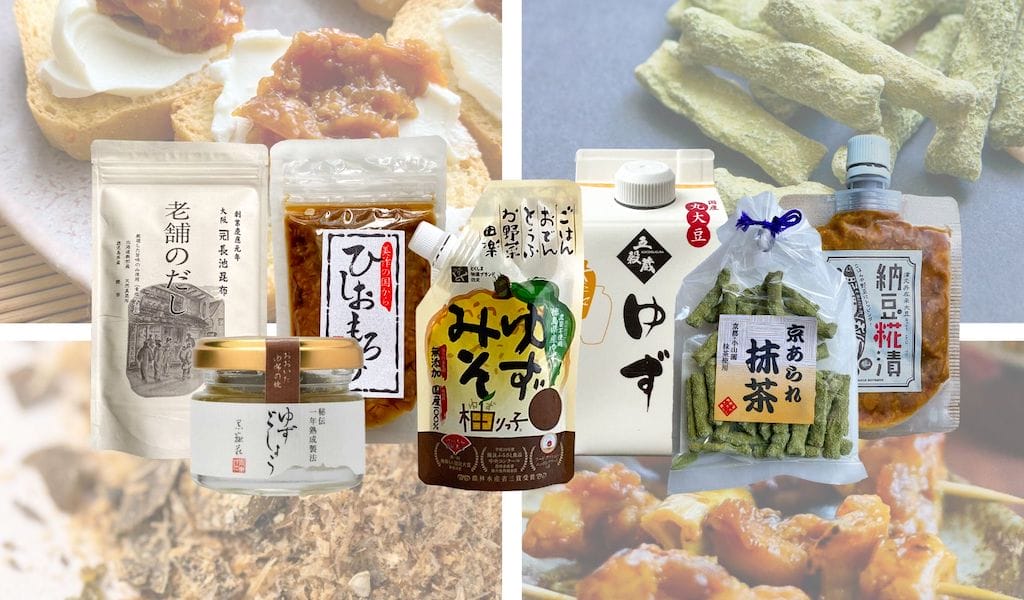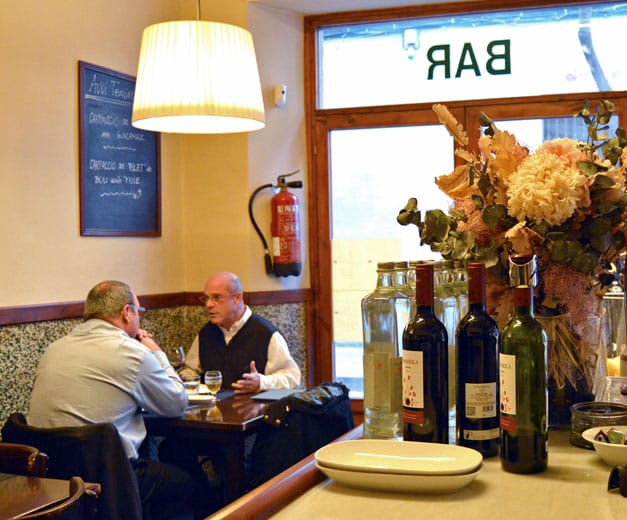Since we’re a company built around the idea that, when traveling, the stomach serves as the best compass, it’s no surprise that we believe that culinary experiences are the best kind of gift. And while we would be very happy to see you and your loved ones on one of our culinary walks or trips (you can purchase gift certificates here) we also want to use our annual gift guide to showcase some of our favorite products and treasures across our cities. From serious kitchen tools to adorably frivolous knick knacks, our correspondents, guides and editors have recommended a range of items that they eat, use or just love – often made by people they know.
During the height of the pandemic, at a time when it was difficult to make connections between travelers and our local heroes, we put together a series of boxes from our cities featuring some of our favorite bites and ingredients. In addition to this year’s recommended products, we have brought a handful of our city boxes back for the 2022 holiday season. We hope that with every purchase we can bring the flavor of these cities into your home and kitchen, as well as support the essential work of our beloved spots and artisans.
The holiday season is littered with gift guides for the “minimalist older brother,” “cat lover,” “plant enthusiast,” “man’s best friend” – you name it. While we can’t guarantee to cover every personality (or species) with our own gift suggestions, we can promise a relatively short list of highly selective, quality products that are affiliate-link free and Culinary Backstreets-approved. Many of the items are featured in our shop or in stories that we’ve published, and we worked our hardest to connect you directly with producers – while we weren’t always successful, we did manage to avoid Amazon entirely.
Now, without further ado, here’s CB’s 2022 gift guide:
Athens
Backstreet Plaka Box
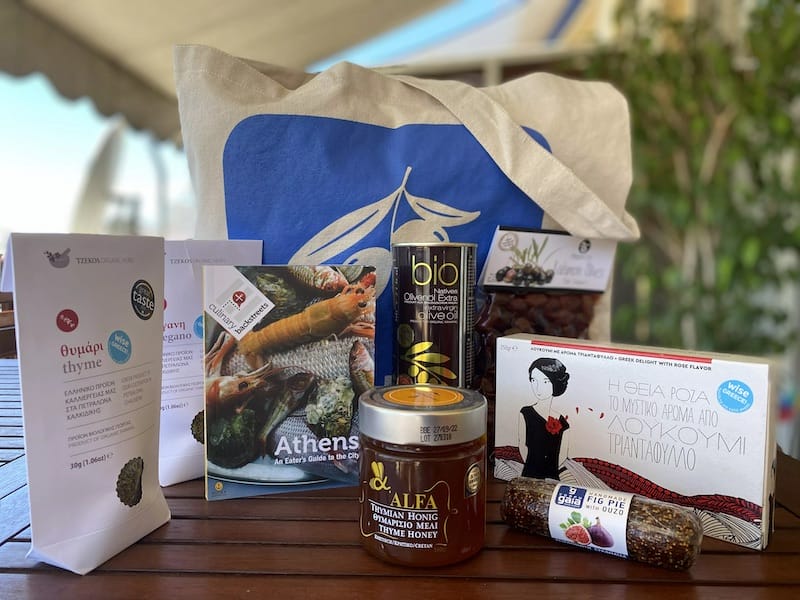
Our Backstreet Plaka Box, like our food tour in this ancient district, uncovers the culinary diamonds in the touristy rough. Among the specialty products included – all made by small producers from across Greece – is a can of Liokarpi, an award-winning olive oil from Crete made using the robustly-flavored Koroneiki variety of olives, oregano and thyme from Tzekos, an organic herb grower in northern Greece’s Chalkidiki region, and sykomaida, a dried fig cake made with a touch of ouzo that’s a traditional specialty of Corfu. Order here.
Krokos Kozanis Organic Greek Red Saffron Filaments
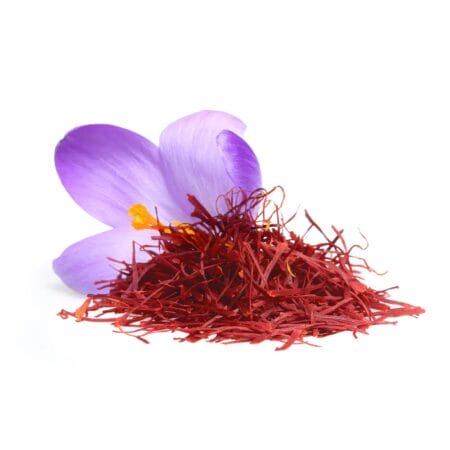
Saffron, also known as “Earth’s Gold,” is considered one of the world’s most precious spices, one with scientifically proven health benefits. Greek saffron, in particular, is among the best in the world and its history and use in Greece dates back to the Minoan Times (c. 2,600 – 1,100 BC). Greek Saffron has a particularly vibrant, almost red color, and is considered a superfood and an aphrodisiac! Today Greek saffron is a Protected Designation of Origin (P.D.O.) product with the official denomination of “Krokos Kozanis” as it comes from the region of Kozani in northern Greece.
The beautiful purple saffron flower blossoms only once a year, in October, for just about
three weeks. The flowers are handpicked daily by experts from dawn until sunset, followed by a meticulous and lengthy processing and drying period of up to 60 days. Krokos Kozanis can be bought either in filaments or powder, but I always prefer the filaments unless I want to use it in a specific way (i.e. in a dessert recipe where powder might be more easy to work with). There are numerous culinary uses for saffron, from pasta and risotto dishes, to puddings, cakes and tarts. I also love using it in cocktails and it’s wonderful to add to teas, particularly when you want to use it for its medicinal values. Carolina Doriti
Aegina Pistachios
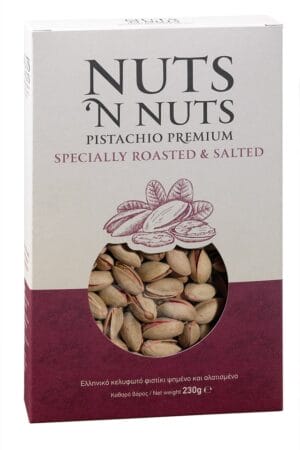
The island of Aegina is renowned for its pistachios. The variety of nuts grown on the island are particularly tasty, bright green inside and covered with a pink skin. Salted and roasted pistachios are a very popular snack in Greece. We normally buy them whole in their shell as these are the best quality pistachios kept fresher and tastier for longer. Plus, having to shell and open each one makes the eating process a bit slower, and somehow even more enjoyable! Aside from being a perfect snack, pistachios are also great to use in a variety of recipes, from pestos and salads to an array of treats such as cakes and baklavas, chocolate truffles and energy bars. These pistachios can be hard to find, but a good option (that won’t break the bank) are these, Aegina variety pistachios grown in Markopoulo. Carolina Doriti
Barcelona
Barrio Box: Gràcia, Born, Sants
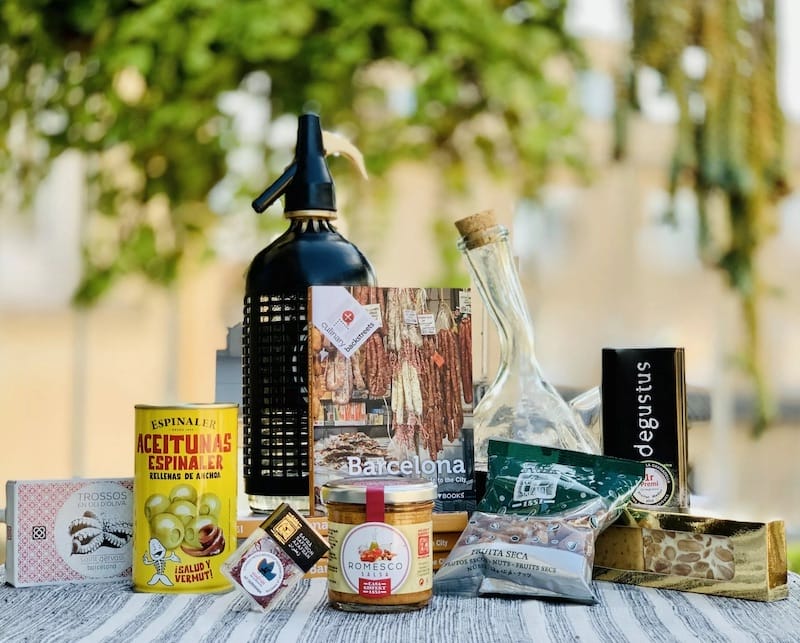
When the afternoon hora de vermut comes around, our Barrio Box gives you almost everything you need to partake as if you’re in Barcelona (sadly we can’t ship the vermouth itself – but we include a list of recommended bottles or you can try the DIY kit below!). It features some of the very best bites from the neighborhoods that we visit on our food tours, including artisanal tinned seafood from Entrelatas, a favorite conservas shop in Grácia; Llargueta almonds roasted at Casa Gispert, a food shop in the Born neighborhood that opened in 1851 and has one of Europe’s oldest nut roasters; and heavenly olives in anchovy paste from L’espinaler, a Catalan brand that is synonymous with vermouth culture. Order here.
Spanish Cheese Collection, 5 Cheeses
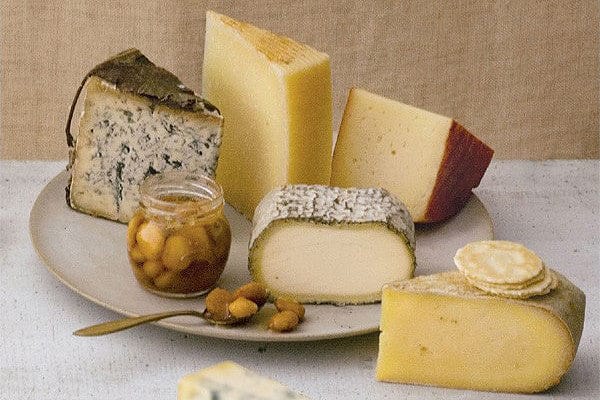
This shop, created by chef and cheese specialist Terrace Brennan, offers a great selection of Spanish artisan cheeses, a representation of the diversity of different regions and traditions. From the Basque Country, a smoked Idiazábal cheese made from Latxa raw sheep’s milk, it is creamy and firm with medium intensity. From Ávila – in Castilla León, very close to Madrid – is the Monte Enebro, an award-winning goat cheese with Roquefort mold in the rind. Also from Castilla León is the Valdeón Valley cheese, a softer blue cheese made from a blend of goat and cow milk. One of the most iconic Catalan cheeses is the Garrotxa, made from goat milk and aged for 2-3 months. And finally, the collection would not be complete without the famous raw sheep’s milk Manchego from Castilla La Mancha, aged during 12 months. Don’t forget the bread with tomato and olive oil or the addition of some fresh or dry fruits when making your Spanish cheese board at home. Paula Mourenza
Partida Creus Ancestral (Pet Nat) Wines

Cava is the most famous Spanish sparkling wine, mainly produced in Catalonia. During the last couple of decades, however, local producers passionate about natural wines started to develop the next generation of sparkling wine in Spain, and Catalonia was at the center of the movement. In Spanish, we call the Pet-Nat (Pétillant Naturel) wines ancestrales for the more primitive technique used to create the bubbles, with a unique two-step fermentation: first in the tanks, and second directly in a bottle closed with a crown cap. From specialty website The Natural Wine Shoppe, founded by two young natural wine lovers in Washington D.C., Dante Decicco and Greg Edsall, we propose a couple of Catalan ancestrales produced by the natural and biodynamic winery Partida Creus: Partida Creus AA Blanco, a bubbly white wine that’s fresh and fun, made from a blend of Xarel·lo, Perellada, Moscatel and Ull de Llebre (Tempranillo); and the Partida Creus CX Rosé, a sparkling rosé that’s fragrant and aromatic, made from Cartoixa Vermell grapes (also called red Xarel·lo, a more rare local variety). Both wines are ideal for pairing with cheeseboards, fish, vegetables and poultry. Paula Mourenza
Istanbul
Turkish Delight by Marsel Delights
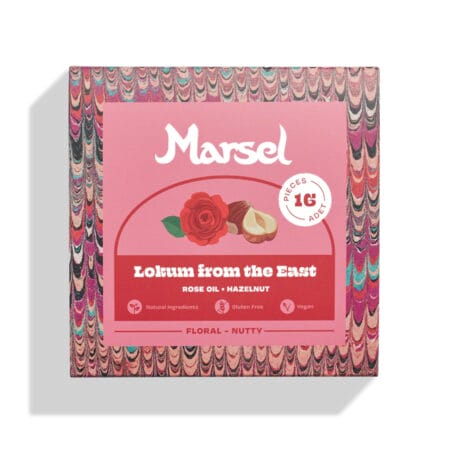
For any who have tried boxed Turkish delight outside Turkey, just why Edmund would betray his family for this sticky, overly sweet treat is a bit of a head scratcher. But lokum done right is a whole other experience, though typically only one to be had in-country. Marsel, however, not only ships its delights abroad: It takes things up another notch with its twists on traditional flavors. Marsel’s riff on classic rose Turkish delight is given a sour kick with tart blackberries and lemon salt, making what is usually a cloying flavor worthy of the White Witch’s table. This may just be the perfect stocking stuffer for any family member who’s been dying to try these gummy sweets after reading about them in The Lion, the Witch, and the Wardrobe. Find out more on Marsel Delights and its masterful founder Selim Cenkel in our story by Michael Butterworth. Order here. Tas Anjarwalla
Organic Aged Kaşar Cheese
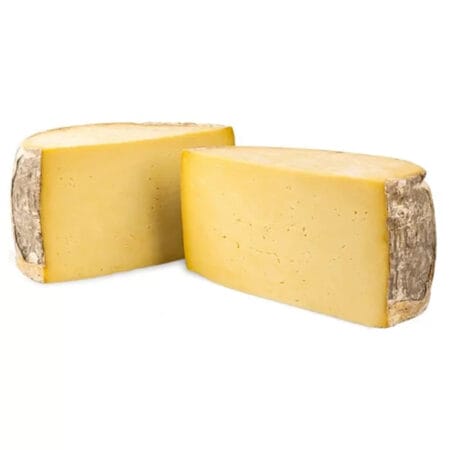
Synonymous with its origin city of Kars in Eastern Turkey, eski kaşar is an aged, firm yellow cheese that has a pleasantly sharp bite and a slight crumble. Commonly found in most Turkish breakfast spreads, this aged cheese pairs well with cured meats, honey and jams – and a good red – and it’s even great in sandwiches. A good quality block of eski kaşar will be a welcome replacement for that boring Romano on the holiday cheese board, and a flavorful gift for the adventurous cheese lover in your life. Order here. Tas Anjarwalla
Istanbul Eats: Exploring the Culinary Backstreets

It’s hard to believe, but our Istanbul Eats book has now been in print for over ten years. That doesn’t mean we haven’t been resting on our laurels. In fact, a completely revised and expanded 9th edition of the book has just been published. Like previous editions, this one explores all of Istanbul through its backstreets eateries, from hidden kebab joints near the Grand Bazaar to fish shacks up the Bosphorus. Consider this book the key to understanding the city. Order here. Culinary Backstreets
Lisbon
Culinary Backstreets Lisbon: An Eater’s Guide to the City
We’ve been exploring the culinary backstreets of Lisbon since 2015, gaining an intimate understanding of the city’s wondrous food scene in the process. We’re happy to report that after all these years of writing about where to eat in Lisbon, we have compiled our material for a guidebook which is set to be published in March, 2023. Going deep into Lisbon’s neighborhoods and their local eateries, the book covers everything from humble tascas to some of our favorite more refined spots and everything in between (including some culinary day trips out of the city). With this book in hand, you’ll have a good reason to get lost in Lisbon. Preorder the book (approx. $14) here.
Rare White Azores Tea
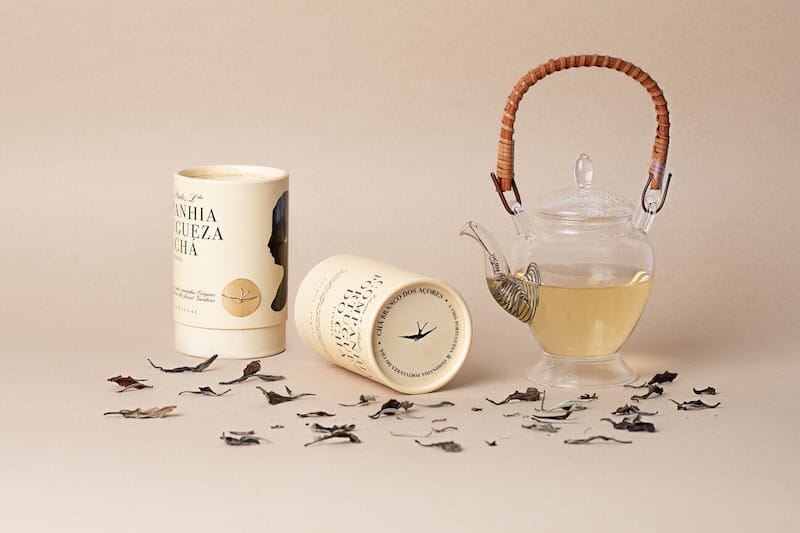
This smooth and delicate tea, with floral and woody notes, is the result of an experiment by the Azorean Agricultural Services – they wanted to check if a traditional White Tea could be produced in the Azores with the same quality and characteristics of those that traditionally come from China. And it can. Companhia Portugueza do Chá, a Lisbon shop that sells exquisite and unique teas and blends is one of the rare places where it is still possible to find it. Tiago Pais
Garum from the Roman tanks of Tróia
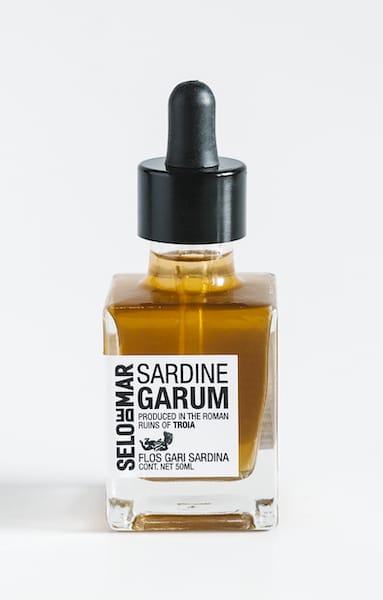
With the excellence of fresh sardines caught in the Atlantic and sea salt harvested nearby, garum produced one hour south of Lisbon is the ultimate gift for an umami Christmas table. Despite garum’s connection to Rome, the Empire’s largest manufacturing facility for the sauce was actually located in what is now Portugal, more precisely, on the island of Tróia. Garum was the ketchup of its day, a ubiquitous condiment found on every table and in every pantry. Prepared by fermenting whole, brined small fish for multiple months, the amber-colored umami bomb was a major part of Roman trade and widely used across a variety of dishes, from meats to salads and even in sweets or wine.
In 2021, Victor Vicente and Pedro Almeida – the owner and chef, respectively, of Lisbon’s Can the Can – placed 400 kilos of locally caught and gutted sardines, 129 kilos of salt and 320 liters of spring water in one of Tróia’s ancient Roman stone tanks, where archeologists and researchers allowed the ingredients to ferment for six months. The result is now available in small bottles of 50 ml, a delicious condiment. Just a few drops can bring a tuna tartar, salads or roasted vegetables to another level. It costs 15 euros (around 15 USD dollars) and can be bought here . Célia Pedroso
Los Angeles
Hot mustard and ornament from Phillippe’s French Dip

Phillippe’s French Dip, an L.A.’s institution in Chinatown where we begin our Culinary Frontier food tour, is not only famous for its claim as the originator of the French dip sandwich, it’s also famous for having some of the best hot mustard around. The French mustard is made from an old family recipe that has been passed down through generations. It’s known to be hot enough to clear your sinuses, but those who can handle it never fail to slather their sandwich with the mustard. Bring a jar home and try it for deviled eggs and other recipes.
If spicy mustard isn’t your thing but you’re looking to give something unique to someone who loves Phillippe’s, the beef dip sandwich Christmas ornament makes for a cute gift. The iconic baguette and thin slices of roast beef pictured on the ornament are sure to make someone hungry on Christmas morning. Fiona Chandra
The Smokey Fish from The Joint Seafood
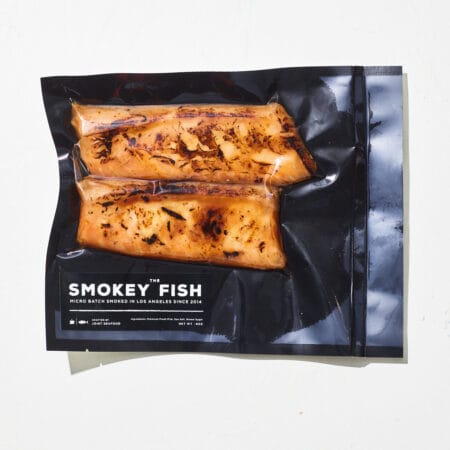
Among food lovers in Los Angeles, The Joint Seafood has carved a name for itself by dry-aging all the fish they sell. The dry-aging process improves the texture by breaking down the connective tissue and also extends the shelf life of the fish, while reducing seafood waste. You can send The Joint’s special dry aged fish to your loved ones anywhere in the country from their online shop. Choose from salmon, bluefin tuna, or striped bass which are all sustainably sourced, dry-aged and then smoked with a blend of hickory and cherry wood. Fiona Chandra
Marseille
Henri Bardouin Artisanal Pastis
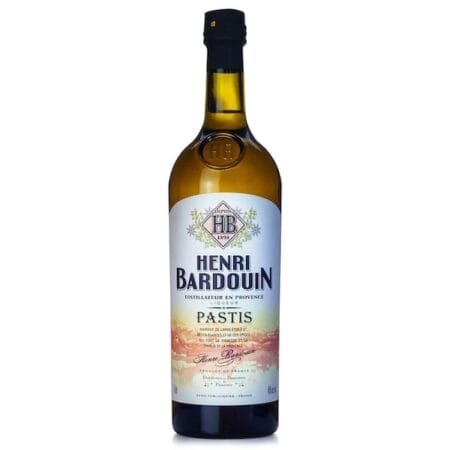
Born in Marseille in 1932, pastis is the city’s quintessential quaff, sipped at apéro hour, after pétanque matches and at social gatherings. Stemming from patisson, the Provençal patois for “mixture,” pastis is principally made with star anise and licorice. Artisanal versions include a mix of aromatic plants that sprout across Provence. Our favorite, Henri Bardouin, bursts with a bouquet of 65 plants and spices, from thyme and fennel plucked in nearby hills to Tonka beans and cardamom from further afield. Rigorously tested and expertly assembled, this incredibly flavorful, terroir-driven blend earns its self-named “grand cru” title. The only artisanal pastis sold in the US, now you can taste it for yourself. As a drink that’s meant to be shared, pastis is an ideal sip for the holidays. Plus, its digestion-aiding properties are a gift to your belly after all the feasting. Alexis Steinman
Marrons Glacés
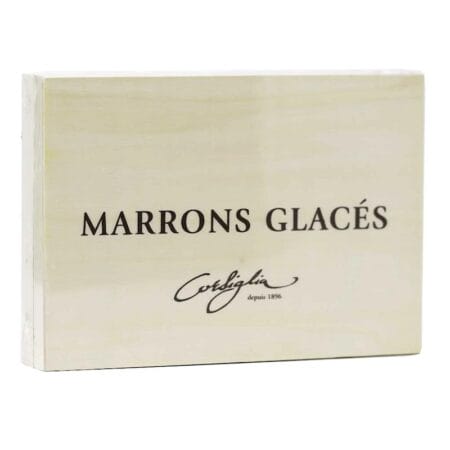
In Provence, Christmas is celebrated with the 13 Desserts de Noël. Each family has their own lucky 13, which they compose from four food groups: nuts, bread, confections, and fruit. While the nuts (mendiants = beggars) symbolize the Christian orders that take vows of poverty, it’s a holiday after all, so decadence is a must. That’s why many tables are topped with marrons glacés, candied chestnuts. The best come from Maison Corsiglia, who uses 126 years of savoir-faire to transform the hard Provençal nut into luxuriously soft and sweet treat. Reputed across France and the world, the “specialist de marron glacé” is located just outside of Marseille, in Aubagne. We recommend ordering them wrapped in gold foil for holiday bling in bite-sized packages. The perfect size for stocking stuffers… Alexis Steinman
Mexico City
Backstreet Mexico City Box
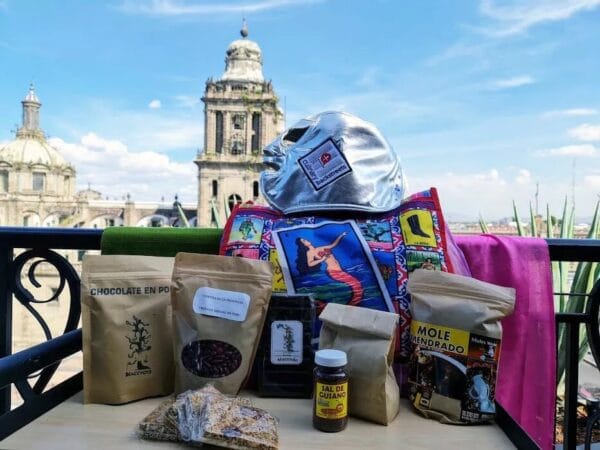
Filled with products from the people who are part of our Mexico City tours and trips, our Backstreet Mexico City Box showcases the many layers of this incredibly diverse metropolis. Like the Almendrado mole from the family-run Moles México in Milpa Alta, a village-like area on the southern edge of Mexico City (while in town we also found a source for heirloom beans that are rarely seen outside of Milpa Alta’s markets). And the cacao treats from the family-run Chocolatería Macondo, located near the site of the 2,000-year-old Teotihuacan pyramids, including a cacao-rich bar for baking or nibbling on and a package of powdered chocolate to make hot or cold drinks. Order here.
Green Chiltepín Chiles
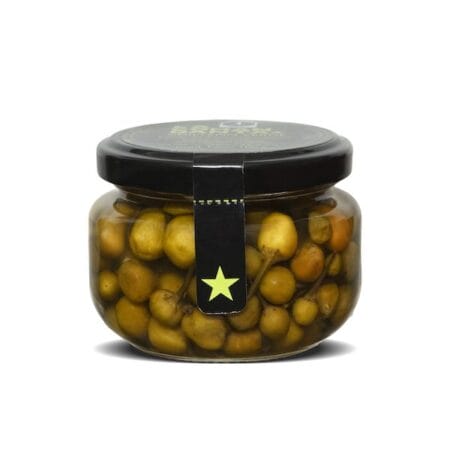
Chile Piquín or Chile Chiltepín is the name given to a large number of very spicy small chiles that are highly appreciated in Mexican cuisine. Although these chiles are used widely from the north of México all the way down to South America, the chiltepín from Sonora, specifically, are famous for their unique flavor – but aren’t that easy to come by. This is a wild species of chile native to Sonora’s Sierra Madre mountains, and an important ingredient in many regional dishes.
The chile can be consumed either fresh or dried. These green chiltepín chiles have been harvested by members of one of the local communities surrounding the Sierra de Sonora and are pickled and ready to eat, free from preservatives or artificial flavors. Use them to prepare tamales, to season broths, soups or stews. Paco de Santiago
Dining With the Dead Book
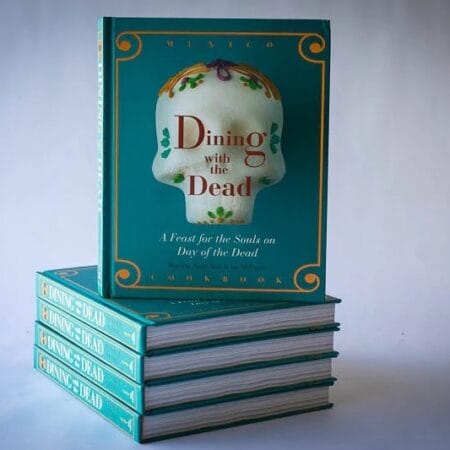
In México, the food and ways we eat and prepare it are linked to cultural traditions that often date back to pre-hispanic times. The most iconic of these is by far the food surrounding the celebration before, during and after the Day of the Dead, observed each November. At his time, every detail, every ingredient, every color and shape has a deep meaning that revives year after year.
Dining with the Dead: A Feast for the Souls on Day of the Dead, by Mariana Nuño Ruiz and Ian McEnroe, details the food traditions of Día de Muertos, with over 100 recipes for traditional dishes. It even includes instructions on making altars, sugar skulls and other decorations to remember and honor those passed on this festive holiday. Paco de Santiago
Naples
Gazzosa With Amalfi Lemon
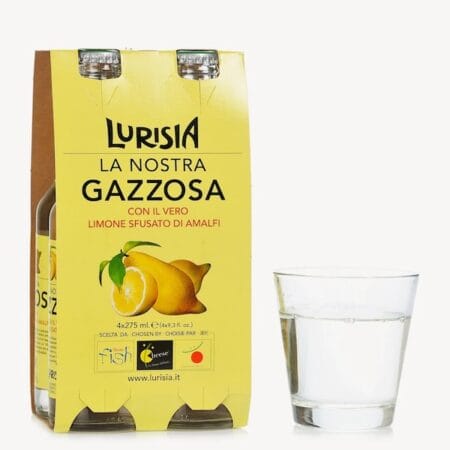
One of the highlights of our Naples food walk is a visit to one of the city’s last remaining “water banks,” kiosks that serve various mineral waters and other refreshing drinks and are especially famous for their gazzosa. It’s a relatively simple concoction: mix the juice of a squeezed lemon with sulfur water drawn from springs located in the volcanic areas around Naples and then, right before serving it, add a bit of bicarbonate. The drink begins to bubble and seethe and should be consumed right after the volcanic eruption takes place in the glass. While the gazzosa made by Italy’s Lurisia comes without a sulfurous (and odorous) kick, it is made with the uniquely fragrant lemons grown on the Amalfi coast, giving it the right kind of local flavor. Order here. Culinary Backstreets
Organic Piennolo Tomato Seeds
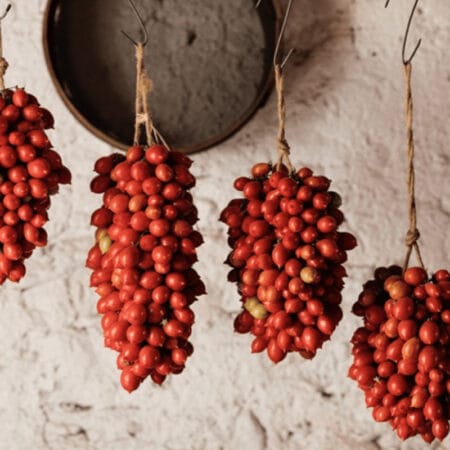
Somewhat improbably, winter is the best time to eat fresh tomatoes in Naples. As soon as the days get shorter and the nights get colder, small cherry tomatoes with a distinctly pointy end start to appear at every vegetable stall and restaurant throughout the city – this particular version of the fruit is known as pomodorino del piennolo del Vesuvio, or simply piennolo. Thanks to their unusually thick skin and low water content, these special tomatoes stay fresh and last all winter – if they don’t get eaten up much earlier. But for those who can’t make it to Naples to try these wondrous tomatoes, there’s another option: growing your own. These organic heirloom seeds can either be given as a gift for the gardner in your life or you can plant them yourself and then surprise someone with a bouquet of piennolos. Order here. Culinary Backstreets
New Orleans
Filé Powder
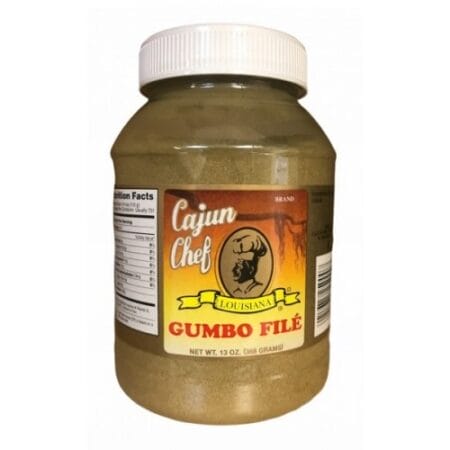
Filé gumbo is synonymous with New Orleans. Although gumbo is an African word for okra, it is more common in New Orleans to find your creole gumbo thickened with filé powder. Filé powder is ground sassafras root, and it was introduced to Europeans by the Choctaw Indians. Along with a roux, it is one of the basic flavoring and thickening components of a proper New Orleans gumbo. It can be added either during the cooking process or at the table during service – its unique flavor and aroma will elevate your gumbo to the next level. James Cullen
Red Beans
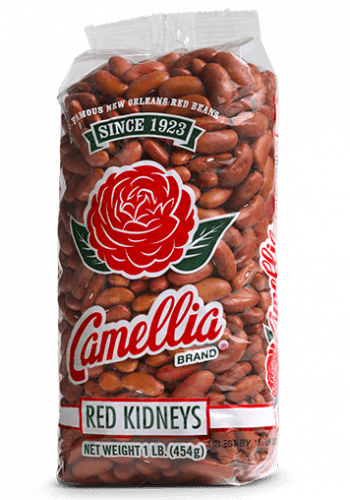
If it’s Monday in New Orleans, the delectable smell of red beans and rice can be found wafting throughout the city. In the old days, Monday was synonymous with laundry day, and it was also the day that the servants and the enslaved might get a hambone left over from Sunday dinner. That hambone would be placed in a pot along with some red beans and slowly cooked over a fire all day while laundry and other tasks were attended to. Eventually, the dish became synonymous with Mondays in the city. Served over a bed of fluffy Louisiana long grain rice, this simple meal is as satisfying as it gets. Nowadays, you can eat red beans whenever your heart desires, but most New Orleans cooks agree that the only Red Beans worth your time and effort are Camellia brand Red Beans, grade-A, washed, and picked over to prevent stones and other impurities from ending up in them. There are many imitators, but Camellia is the only one that I would recommend. James Cullen
Oaxaca
Mole Starter Kit
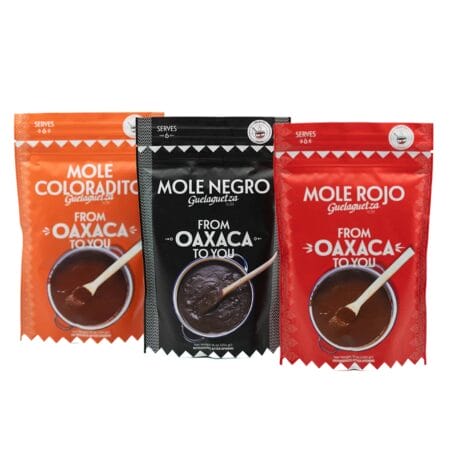
While the word starter sounds quite modern or even alchemic, the mole starter, known in Oaxaca as mole en pasta, is a premade version of mole paste that allows you to enjoy this traditional dish at home, making the mole preparation experience easier and quicker. The normal process for making mole is long and time-consuming, and can take up to 1-3 days. However, it can be divided in two stages: the paste preparation, and the rehydration and cooking. During the first stage, all ingredients (sometimes as many as 30, depending on the recipe!) must be roasted and then ground until they are integrated into a smooth paste. In the second stage, this paste is hydrated with chicken stock and tomato puree and cooked until it becomes a thick sauce which can be served with turkey, chicken breast, mushrooms or even seafood.
In Oaxacan households, the ritual of mole is long because the result is meant to last. This is the reason why grandmas and cooks often reserve a big portion of the paste and store it in the fridge for days or weeks (if we can resist eating it that long!). These mole starters save you the paste prep time, and can be stored and saved for special occasions, just like we do it here, such as weddings, birthdays, anniversaries or holidays. The black mole is for very solemn events, while the spiciness of the red mole and the sweetness of coloradito mole are more appropriate for more informal celebrations. Maria Ítaka
Maiz Azul
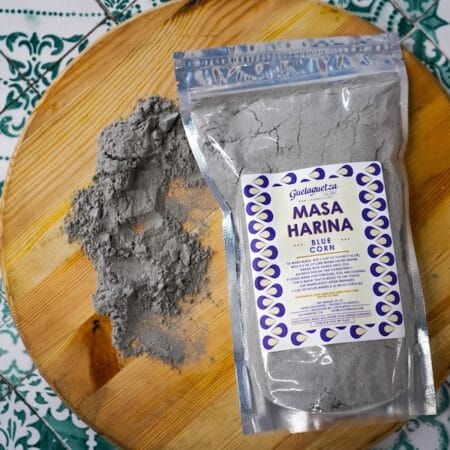
Good Mexican and Oaxacan food needs good tortillas made with organic corn that has been properly nixtamalized. Corn is the axis of our food; it grows in every corner of the country. The taste of native corn can’t be compared to anything else – it must be sweet, starchy and slightly alkaline. This dough for corn tortillas is made with native blue corn that has been cooked, nixtamalized and dried for easy storage. Just hydrate the mix, follow the instructions and you will see how this masa will render a colorful and soft tortilla that can wrap up all sorts of things: grilled meat or shrimp with hot salsa, sautéed mushrooms, freshly made guacamole with queso fresco or panela cheese, or – a Oaxacan treat – a bunch of grasshoppers. This is the perfect gift for Mexican food purists looking to enjoy a proper taco night! Maria Ítaka
Porto
Sardine Pate in Olive Oil
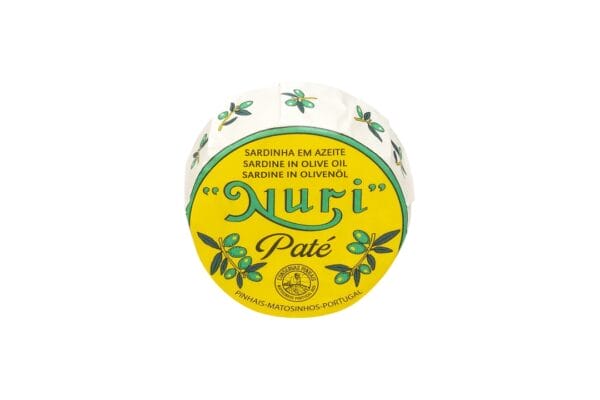
Canned sardines are more than just preserved fish in Porto; they’re a culinary tradition and a coveted artisanal treat. These conservas can be enjoyed on their own, atop a slice of bread, or incorporated into a number of traditional Portuguese recipes. The iconic Nuri tins of sardines are produced by Pinhais, a company which was founded in 1920 and which has been producing gourmet conservas for over 100 years. For a truly decadent addition to your Christmas feast, try the Nuri Sardine Pate in Olive Oil, from one of the “secret recipes” that have been passed down through generations. Or this keychain, a perfect mini replica of the colorful Nuri tin, complete with tiny sardines peeking out.
Queens
Book: The World Eats Here

“Night markets, whether in Southeast Asia or in the heart of Queens, inspire a thrill … that brings boundless childhood summers to mind.” On warm-weather Saturdays, thousands of visitors share that sensation at the Queens Night Market; we’ve returned again and again since it first opened in 2015. Of course, every summer must come to an end, but The World Eats Here, by QNM founder John Wang and his wife, Storm Garner, helps spread that night-market magic throughout the year. The book includes recipes from more than 40 countries and personal stories of the first- and second-generation immigrant cooks who prepare them. It’s a cookbook, an inspiration and, most of all, a reminder to mark our calendar for next year’s season opener. Dave Cook
Wilk Apiary Honey
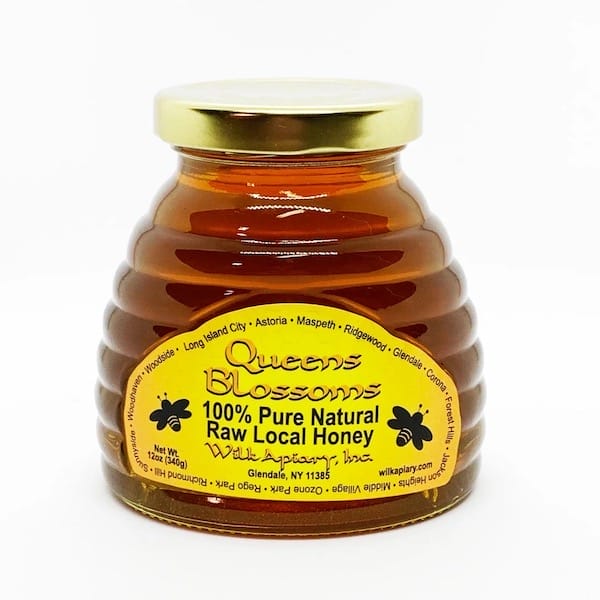
As well as we know Queens, when it comes to making intimate connections with individual neighborhoods, we’re no match for the honeybees of Wilk Apiary. Wilk keeps hives in a half-dozen Queens communities, where the industrious insects range as far as three miles to forage for nectar that they ultimately convert into honey. Each of the six “zip code” varieties sold by Wilk is “raw” – that is, minimally processed, the better to capture the character of the flowers in a given neighborhood. Just which flowers? Only the bees know for sure – but they’ve been at this for ages. Dave Cook
Tbilisi
Tusheti wool slippers

These traditional hand-knit slippers from the Tusheti highlands of Georgia may not be a gastronomic offering, but they fit right in with the season of countless indoor reunions and shared meals. Not only are they cozy, warm and chic as heck but they’re also 100 percent wool, harvested from the sheep that were once sheared to provide wool for Soviet army winter uniforms. Since the collapse of both the Soviet Union and its industries, most of the wool was thrown out until a few enterprises started encouraging local women to revive this traditional craft to offer to tourists. With double-layered and threaded durable soles, aesthetic geometric patterns and lovely earthy colors, these indoor slippers, called chiti in Georgian, are the perfect gift for colder climes. Get them delivered from the Tbilisi-based social enterprise Ethno Design Shop through their website or U.S. centric Etsy shop. Pearly Jacob
Tabla Tablecloths
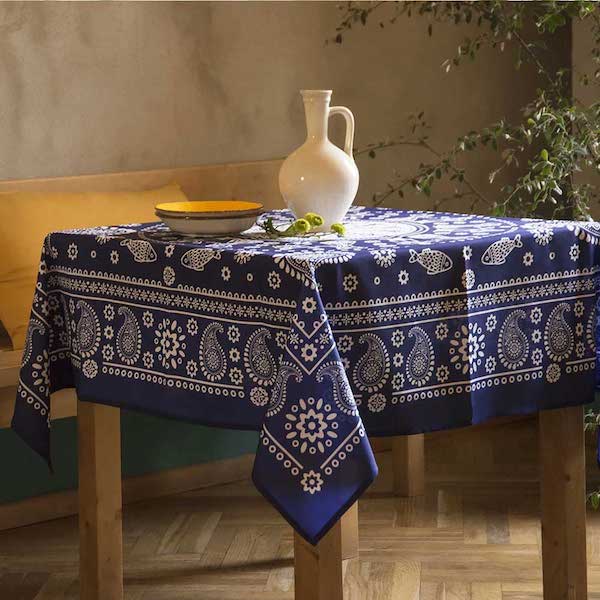
While the word supra is synonymous with the endless traditional Georgian feasts that feature dozens of plates of delectable items stacked on top of another, the literal meaning of the word was “tablecloth” – presumably hearkening back to a time when they were pulled out only for feasts and to receive guests. Blue was the celebratory color for Georgians and the ceremonial tablecloth was the lurji supra, or blue tablecloth. While these traditional tablecloths became rarer with time, a small Georgian company has brought them back from obscurity, making them a perfect gift item. While you’d pay a small fortune for original handmade block print vintage ones, Blue Tabla (tabla being an old Georgian word for a long and low wooden feasting table) now makes affordable textile print versions with traditional patterns and motifs. We recommend choosing the more expensive cotton versions over the polyester models, both which can be ordered from Blue Tabla’s website. Pearly Jacob
Tokyo
Enami Farm Marmalade

Japanese marmalade might sound unlikely, but it all starts to make sense when you realize that Japan is home to dozens of delicious and distinct citrus varietals. In fact, Japanese marmalade makers often take home top prizes at the annual World’s Original Marmalade Awards. We love the reduced-sugar marmalade by engineer-turned-citrus-farmer Noriyuki Enami, who makes his Double Gold Award spread with the bitter and intensely fragrant tachibana, Japan’s rarest and only native citrus. Think feathery slivers of citrus peels (sliced by hand, of course) suspended in a beautifully-set golden jelly. Essential for any marmalade lover in your life. Florentyna Leow
Sake Ware by Amanda Tong

Ceramics are an essential part of experiencing fine sake in Japan — sure, you could use regular vessels, but a good sake tastes better with beautifully made ceramics. Surprise your sake-loving friend with a one-of-a-kind sake bottle by Japan-based ceramicist Amanda Tong, whom we spoke to earlier this year about her practice. If you’re shopping for an especially discerning recipient, impress them with a limited-edition, made-to-order sake set combining a sleek, ergonomic pouring vessel by Amanda’s partner, Jun Matsumura, and four marbled sake cups by Amanda. Who said beauty had to be useless? Take that, Oscar Wilde. Florentyna Leow
Tokyo Backstreet Box

Tokyo may be a megacity of more than 20 million people, but there are neighborhoods where the rhythm of daily life is more accessible, especially when it comes to eating. From old specialty shops to modern department store food courts, in these places the traditions and the communities they nurture are still identifiable. That’s especially the case in Kichijoji, the quintessential Tokyo neighborhood that’s the setting for our food walk and whose everyday food-focused rituals are the inspiration for this Backstreet Box. With this box, you’ll be able to recreate some of those rituals in your own kitchen, bringing some of the magical flavor of Kichijoji and Tokyo into your life. Some of the items in the box include: awase dashi, a versatile everyday staple for making sauces and soups, aged yuzu miso, matcha arare (rice crackers) and more.
 November 27, 2020 Essential Services
November 27, 2020 Essential Services
We have been watching Covid-19 sweep across the country like an invisible alien death […] Posted in Tbilisi December 5, 2013 El Tossal
December 5, 2013 El Tossal
Editor’s note: We regret to report that El Tossal has closed.
Now that ski season has […] Posted in Barcelona June 10, 2021 Bodega La Palma
June 10, 2021 Bodega La Palma
Although the Gothic neighborhood in Barcelona’s Ciutat Vella (“Old City”) district is […] Posted in Barcelona
Published on November 16, 2022
Related stories
November 27, 2020
TbilisiWe have been watching Covid-19 sweep across the country like an invisible alien death fog claiming hundreds of lives and snuffing out businesses, one by one. Some restaurants intent on survival have changed their menus to delivery-friendly offerings of shawarma, hamburgers and pizza. To save her lunch counter, 34-year-old Naia Gabelia has also chosen delivery,…
December 5, 2013
BarcelonaEditor’s note: We regret to report that El Tossal has closed. Now that ski season has begun in Catalonia, thousands of Barcelonans make the pilgrimage every weekend to the Pyrenees. But winter sports are not the only draw; this is also the time to enjoy the cooking at masias, traditional farm buildings that have been…
June 10, 2021
BarcelonaAlthough the Gothic neighborhood in Barcelona’s Ciutat Vella (“Old City”) district is supported by deep foundations – it’s the site of the former Roman village of Barcino – much of the quarter’s more recent history has been swept away by the rise of tourism. The few remaining old shops and businesses are often in a precarious…







































